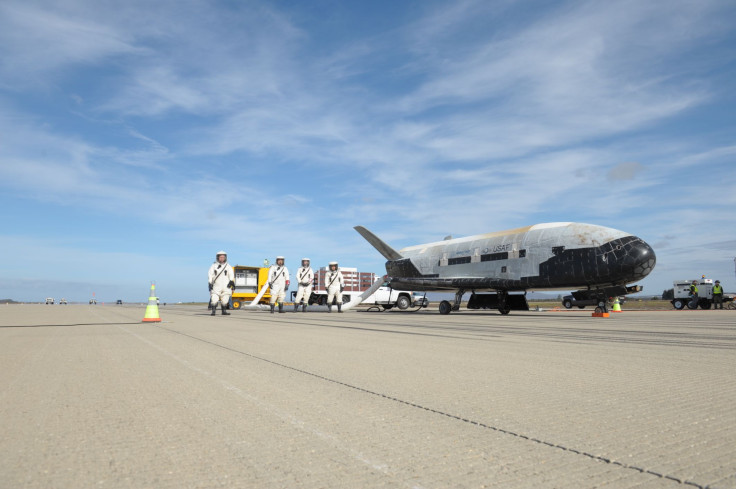US Air Force’s Unmanned X-37B Space Plane Returns To Earth After Secret On-Orbit Experiments

A mysterious U.S. military space plane landed in California on Friday, after spending nearly two years in orbit. The plane, which was conducting some top secret 'on-orbit experiments', was launched in December 2012 by the U.S. Air Force.
The unmanned aircraft, dubbed the X-37B Orbital Test Vehicle mission 3, or OTV-3, landed at the Vandenberg Air Force Base, located 9.2 miles northwest of Lompoc, California, at 9:24 a.m. PDT (12:24 a.m. EDT). According to a statement from the Vandenberg Air Force Base, the plane returned to Earth after spending 674 days in space during its top secret mission, extending the total number of days spent on-orbit for the OTV program to 1367 days.
“The X-37B is the newest and most advanced re-entry spacecraft,” the Air Force said in the statement. “Managed by the Air Force Rapid Capabilities Office, the X-37B program performs risk reduction, experimentation and concept of operations development for reusable space vehicle technologies.”
The OTV-3 marked the third in a series of space flights conducted by the Air Force using two X-37B planes. The OTV program’s first mission, launched in April 2010, lasted for 225 days, while the second mission was launched in March 2011 and lasted for 469 days. A fourth X-37B mission is reportedly be slated for launch from Cape Canaveral, Florida, in 2015.
The current aircraft measures more than 29 feet long, with a wingspan of about 15 feet and a weight of about 11,000 pounds. The planes, designed by Boeing's Phantom Works division, are reportedly able to stay in orbit for months by using a solar array to generate power.
While the purpose of these flights is still unknown, the mysterious nature of the X-37B missions has led to many conspiracy theories. According to Live Science, the U.S. military could use the OTV program for various purposes, including surveillance, space bombing, interfering with other satellites, spying on the Chinese space station and deploying spy satellites.
© Copyright IBTimes 2024. All rights reserved.






















